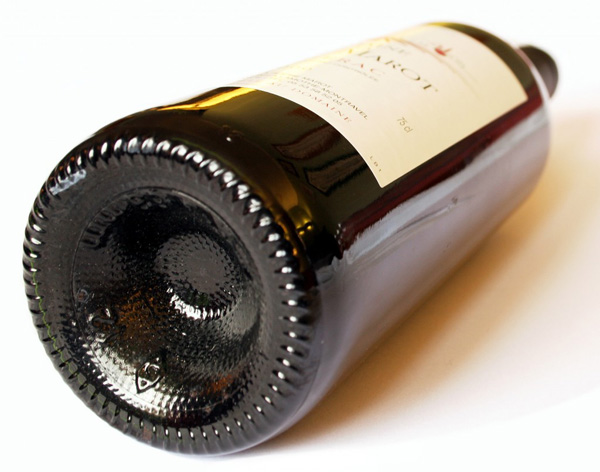You know the deal, the more some folks learn about a topic, the more shortcuts/slang/acronyms/initials/technical jargon can be tossed around. I’m here to help you understand those sometimes mysterious words and phrases, thus – Wine Words Demystified!
This week’s word is Punt…
According to Karen MacNeil‘s The Wine Bible:
The indentation found in the bottom of many wine bottles. The punt may be shallow or, as is the case of Champagne bottles, quite pronounced. The punt adds stability by weighing the bottom of the bottle and strengthens the glass at the weakest point.
I like punts, and according to Wikipedia:
A punt, also known as a kick-up, refers to the dimple at the bottom of a wine bottle. There is no consensus explanation for its purpose. The more commonly cited explanations include:
- It is a historical remnant from the era when wine bottles were free blown using a blowpipe and pontil. This technique leaves a punt mark on the base of the bottle; by indenting the point where the pontil is attached, this scar would not scratch the table or make the bottle unstable.
- It had the function of making the bottle less likely to topple over—a bottle designed with a flat bottom only needs a small imperfection to make it unstable—the dimple historically allowed for a larger margin of error.
- It consolidates sediment deposits in a thick ring at the bottom of the bottle, preventing much/most of it from being poured into the glass;
- It increases the strength of the bottle, allowing it to hold the high pressure of sparkling wine/champagne.
- It provides a grip for riddling a bottle of sparkling wine manually in the traditional champagne production process.
- It consumes some volume of the bottle, allowing the bottle to be larger for the same amount of wine, which may impress the purchaser.
- Taverns had a steel pin set vertically in the bar. The empty bottle would be thrust bottom-end down onto this pin, puncturing a hole in the top of the punt, guaranteeing the bottle could not be refilled [folklore].
- Prevents the bottle from resonating as easily, decreasing the likelihood of shattering during transportation.
- Allows bottles to be more easily stacked end to end.
- Bottles could be stacked in cargo holds on ships without rolling around and breaking.
- Punts are also used to help pour the wine, providing a grip for the thumb on the bottom bottle for easy pouring.
Punts are cool IMHO…do you use them to pour your wines? I do, especially the deep punts…

I usually only use the punt to pour when I am dealing with champagne. It will be interesting to see what happens to the punt as wineries move to lighter bottles…
Thanks for the comment. It seems only Champagne, and upscale red have those deep punts…